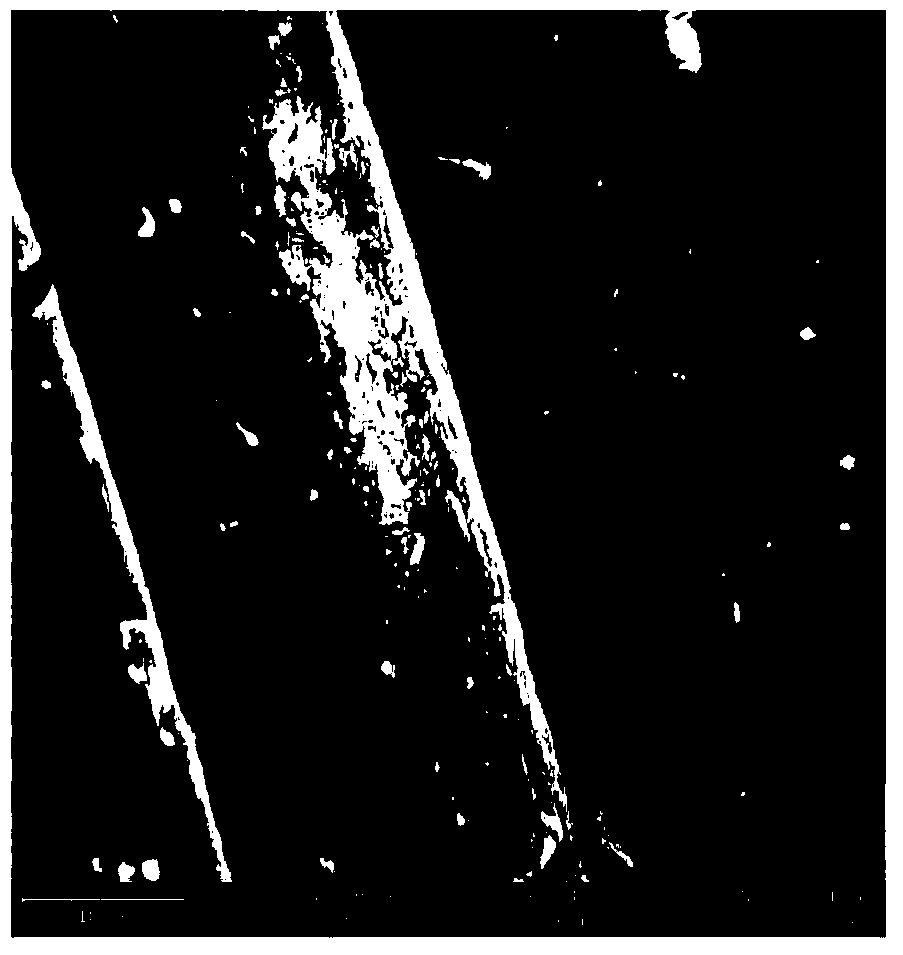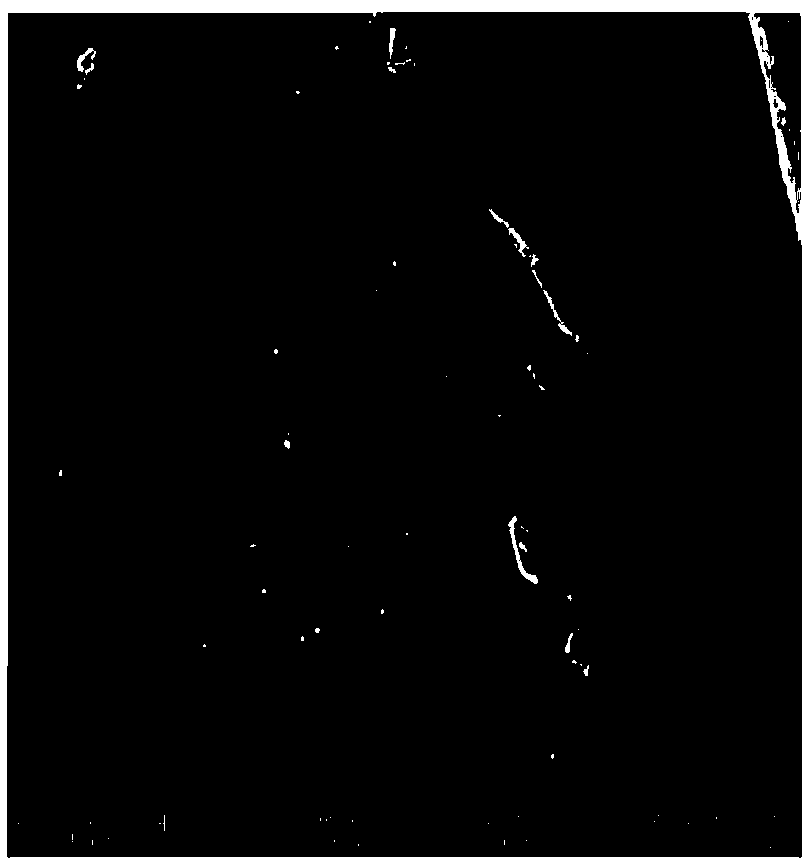Preparation method of polyurethane-3-amino-5-methylisoxazole fiber and its application in the enrichment detection of heavy metals in food
A technology of methylisoxazole and polyurethane fiber, which is applied in the chemical field, can solve the problems of substandard selectivity and achieve good separation effect, strong anti-interference ability and low detection cost
- Summary
- Abstract
- Description
- Claims
- Application Information
AI Technical Summary
Problems solved by technology
Method used
Image
Examples
Embodiment 1
[0040] step one:
[0041] Accurately weigh 2.0g of the original PU fiber and wash it with toluene for 30min, place it in a three-necked bottle with a capacity of 500mL, add 200mL of toluene and raise the temperature to 50°C, then add 2.69mL of diphenylmethane diisocyanate isomer (4,4-MDI) 1.64mL of catalyst triethylamine (TEA), stirred and reacted for 2h under nitrogen protection, filtered out and washed several times with toluene to prepare PU-NCO fibers.
[0042] Step 2: Take 1.0g of the above-mentioned fiber, put it in a three-necked bottle with a capacity of 250mL, add 100mL of toluene, heat up to 50°C, add 200mg of citric acid (CA), an appropriate amount of initiator potassium persulfate, stir and react for 6h under nitrogen protection, and experiment The finished fibers were washed several times with anhydrous ether, and vacuum-dried at 50°C to prepare citric acid grafted polyurethane fibers (PU-CA).
[0043] Step three:
[0044] Accurately weigh 30 mg of PU-CA fiber w...
Embodiment 2
[0056] The reaction solvent in Step 3 in Example 1 was replaced with a different solvent, and the results are shown in the table below.
[0057] Table 1 Elemental analysis results of AMIF in three reaction solvents
[0058]
[0059] As shown in Table 1, the best reaction solvent for AMI and fiber chelation is 1,4-dioxane.
Embodiment 3
[0061] Under optimal reaction solvent condition, change the different reaction temperature of step 3 among the embodiment 1, all the other are completely identical with the step of embodiment 1, thereby explore reaction temperature to synthetic polyurethane-3-amino-5-methylisoxazole fiber Effect of functional base conversion. Figure 6 is the effect of reaction temperature on the conversion rate of polyurethane-3-amino-5-methylisoxazole fiber. Such as Figure 6 As shown, when the reaction temperature is in a lower range (25°C-55°C), the conversion rate of functional groups of chelating fibers increases with the increase of temperature, probably because the higher the temperature, the higher the reaction system can obtain from the outside world. The more energy in the fiber, the more active the organic heterocyclic ligands that get energy become, accelerating the diffusion and concentration to the active sites on the fiber, making the reaction more intense, and the conversion ...
PUM
| Property | Measurement | Unit |
|---|---|---|
| adsorption capacity | aaaaa | aaaaa |
Abstract
Description
Claims
Application Information
 Login to View More
Login to View More - R&D
- Intellectual Property
- Life Sciences
- Materials
- Tech Scout
- Unparalleled Data Quality
- Higher Quality Content
- 60% Fewer Hallucinations
Browse by: Latest US Patents, China's latest patents, Technical Efficacy Thesaurus, Application Domain, Technology Topic, Popular Technical Reports.
© 2025 PatSnap. All rights reserved.Legal|Privacy policy|Modern Slavery Act Transparency Statement|Sitemap|About US| Contact US: help@patsnap.com



